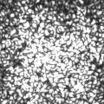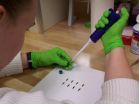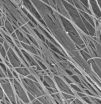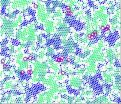(Press-News.org) (New York) – Identifying the specific pathways that promote opioid addiction, pain relief, and tolerance are crucial for developing more effective and less dangerous analgesics, as well as developing new treatments for addiction. Now, new research from the Icahn School of Medicine at Mount Sinai reveals that opiate use alters the activity of a specific protein needed for the normal functioning of the brain's reward center. Investigators were able to block the protein, as well as increase its expression in the mouse nucleus accumbens, a key component of the brain's reward center. It altered the actions of opioids like morphine dramatically. The preclinical study, published online Feb. 24 in the journal Neuropsychopharmacology, is the first to show that opioid use changes activity of the protein RGS9-2 and alters both the threshold for pain relief and affects opioid tolerance.
"We were able to block addiction-related behaviors, but increasing the activity of the protein also lowered the pain relief response to morphine, and mice developed morphine tolerance much more quickly," said the study's senior researcher, Venetia Zachariou, PhD, Associate Professor, Fishberg Department of Neuroscience, Friedman Brain Institute, Department of Pharmacology and Systems Therapeutics, at the Icahn School of Medicine at Mount Sinai.
Dr. Zachariou explained that because the brain's reward center has such a strong impact on analgesic responses, non-opioid medications should be used for the treatment of severe chronic pain conditions. Pain specialists have several alternatives for the treatment of chronic pain. For patients that are already addicted to opioids, "an alternative pain medication could offer more analgesic relief without the adverse effects of opioids." Additionally, with this research in hand, the research team points out that targeting this molecule may eventually lead to a novel treatment for addiction."
In the study, investigators used a novel technique known as optogenetics, which allows the activation of specific neurons via blue light in real time, to determine the exact cell types of the brain reward center responsible for the reduced analgesic response.
"In our earlier work, by inactivating RGS9-2, we saw a tenfold increase in sensitivity to the rewarding actions of morphine, severe morphine dependence, a better analgesic response, and delayed development of tolerance," said the study's senior author. While opiate analgesics act in several brain regions to alleviate pain, their actions in the brain reward center may also affect analgesia. The nucleus accumbens may also affect the development of morphine tolerance, via mechanism that are distinct from those described in other regions of the brain.
Eric Nestler, MD, PhD, Nash Family Professor of Neuroscience, Icahn School of Medicine at Mount Sinai, praised the research. "These discoveries provide important new information about the role of the brain reward pathway in the analgesic responses to opiates".
INFORMATION:
The study was carried out in collaboration with Mary Kay Lobo, PhD, from the University of Maryland, researchers from the University of Crete, and Karl Deisseroth, MD, PhD, from Stanford University, and coauthors from the Icahn School of Medicine.
Opioid addiction is widespread and this research underscores the deleterious effects of its use. According to the National Institute of Drug Abuse, in 2010, 1.9 million Americans satisfied abuse or dependence criteria for prescription opioids.
About the Mount Sinai Health System
The Mount Sinai Health System is an integrated health system committed to providing distinguished care, conducting transformative research, and advancing biomedical education. Structured around seven member hospital campuses and a single medical school, the Health System has an extensive ambulatory network and a range of inpatient and outpatient services—from community-based facilities to tertiary and quaternary care.
The System includes approximately 6,600 primary and specialty care physicians, 12-minority-owned free-standing ambulatory surgery centers, over 45 ambulatory practices throughout the five boroughs of New York City, Westchester, and Long Island, as well as 31 affiliated community health centers. Physicians are affiliated with the Icahn School of Medicine at Mount Sinai, which is ranked among the top 20 medical schools both in National Institutes of Health funding and by U.S. News & World Report.
For more information, visit http://www.mountsinai.org. Find Mount Sinai on: Facebook: http://www.facebook.com/mountsinainyc Twitter @mountsinainyc YouTube: http://www.youtube.com/mountsinainy
Opioid abuse initiates specific protein interactions in neurons in brain's reward system
RGS-9-2 protein affects not only addiction, but analgesic relief and tolerance
2014-02-24
ELSE PRESS RELEASES FROM THIS DATE:
Abdominal fat accumulation prevented by unsaturated fat
2014-02-24
New research from Uppsala University shows that saturated fat builds more fat and less muscle than polyunsaturated fat. This is the first study on humans to show that the fat composition of food not only influences cholesterol levels in the blood and the risk of cardiovascular disease but also determines where the fat will be stored in the body. The findings have recently been published in the American journal Diabetes.
The study involved 39 young adult men and women of normal weight, who ate 750 extra calories per day for seven weeks. The goal was for them to gain three ...
Medical researchers use light to quickly and easily measure blood's clotting properties
2014-02-24
VIDEO:
This video shows the rapid "twinkling " or intensity fluctuations of the speckle pattern in a drop of unclotted whole blood. The rapid "twinkling " is due to the fast thermally-driven motion...
Click here for more information.
WASHINGTON, Feb. 24—Defective blood coagulation is one of the leading causes of preventable death in patients who have suffered trauma or undergone surgery. The body's natural defense against severe blood loss is the clotting ...
NIST microanalysis technique makes the most of small nanoparticle samples
2014-02-24
Researchers from the National Institute of Standards and Technology (NIST) and the Food and Drug Administration (FDA) have demonstrated that they can make sensitive chemical analyses of minute samples of nanoparticles by, essentially, roasting them on top of a quartz crystal. The NIST-developed technique, "microscale thermogravimetric analysis," holds promise for studying nanomaterials in biology and the environment, where sample sizes often are quite small and larger-scale analysis won't work.*
Chemical analysis of nanoparticles is a challenging task, and not just because ...
New biological scaffold offers promising foundation for engineered tissues
2014-02-24
Our cells don't live in a vacuum. They are surrounded by a complex, nurturing matrix that is essential for many biological functions, including growth and healing.
In all multicellular organisms, including people, cells make their own extracellular matrix. But in the lab, scientists attempting to grow tissue must provide a scaffold for cells to latch onto as they grow and proliferate. This engineered tissue has potential to repair or replace virtually any part of our bodies.
Typically, researchers construct scaffolds from synthetic materials or natural animal or human ...
Is previous hypoglycemia a risk factor for future hypoglycemic episodes?
2014-02-24
New Rochelle, NY, February 24, 2014—The automatic "threshold suspend" (TS) feature of an insulin pump helps prevent life-threatening hypoglycemic events when the device's sensor detects blood glucose concentrations below the preset threshold. However, in individuals with type 1 diabetes who have had previous episodes of hypoglycemia the TS feature may be less effective at preventing subsequent events, according to important new results from the ASPIRE study published in Diabetes Technology & Therapeutics (DTT), a peer-reviewed journal from Mary Ann Liebert, Inc., publishers. ...
Vitamin water: Measuring essential nutrients in the ocean
2014-02-24
The phrase, 'Eat your vitamins,' applies to marine animals just like humans. Many vitamins, including B-12, are elusive in the ocean environment.
University of Washington researchers used new tools to measure and track B-12 vitamins in the ocean. Once believed to be manufactured only by marine bacteria, the new results show that a whole different class of organism, archaea, can supply this essential vitamin. The results were presented Feb. 24 at the Ocean Sciences meeting in Honolulu.
"The dominant paradigm has been bacteria are out there, making B-12, but it turns ...
OU researcher and team discover disease-causing bacteria in dental plaque preserved for 1,000 years
2014-02-24
When a University of Oklahoma researcher and an international team of experts analyzed the dental calculus or plaque from teeth preserved for 1,000 years, the results revealed human health and dietary information never seen before. The team discovered disease-causing bacteria in a German Medieval population, which is the same or very similar to inflammatory disease-causing bacteria in humans today—unlikely scientific results given modern hygiene and dental health practices.
Christina Warinner, research associate in the Molecular Anthropologies Laboratories, OU College ...
Gauging what it takes to heal a disaster-ravaged forest
2014-02-24
Recovering from natural disasters usually means rebuilding infrastructure and reassembling human lives. Yet ecologically sensitive areas need to heal, too, and scientists are pioneering new methods to assess nature's recovery and guide human intervention.
The epicenter of China's devastating Wenchuan earthquake in 2008 was in the Wolong Nature Reserve, a globally important valuable biodiversity hotspot and home to the beloved and endangered giant pandas. Not only did the quake devastate villages and roads, but the earth split open and swallowed sections of the forests ...
Penn researchers 'design for failure' with model material
2014-02-24
When deciding what materials to use in building something, determining how those materials respond to stress and strain is often the first task. A material's macroscopic, or bulk, properties in this area — whether it can spring back into shape, for example — is generally the product of what is happening on a microscopic scale. When stress causes a material's constituent molecules to rearrange in a way such that they can't go back to their original positions, it is known as "plastic deformation."
Researchers at the University of Pennsylvania have devised a method to study ...
Parents' attitudes about helping their grown children affect their mental health
2014-02-24
Older parents frequently give help to their middle-aged offspring, and their perceptions about giving this help may affect their mental health, according to a team of researchers.
"We usually view the elderly as needy, but our research shows that parents ages 60 and over are giving help to their children, and this support is often associated with lower rates of depression among the older adults," said Lauren Bangerter, Ph.D. student in human development and family studies, Penn State.
The team -- which included researchers at Penn State, the University of Texas ...
LAST 30 PRESS RELEASES:
Tracing the quick synthesis of an industrially important catalyst
New software sheds light on cancer’s hidden genetic networks
UT Health San Antonio awarded $3 million in CPRIT grants to bolster cancer research and prevention efforts in South Texas
Third symposium spotlights global challenge of new contaminants in China’s fight against pollution
From straw to soil harmony: International team reveals how biochar supercharges carbon-smart farming
Myeloma: How AI is redrawing the map of cancer care
Manhattan E. Charurat, Ph.D., MHS invested as the Homer and Martha Gudelsky Distinguished Professor in Medicine at the University of Maryland School of Medicine
Insilico Medicine’s Pharma.AI Q4 Winter Launch Recap: Revolutionizing drug discovery with cutting-edge AI innovations, accelerating the path to pharmaceutical superintelligence
Nanoplastics have diet-dependent impacts on digestive system health
Brain neuron death occurs throughout life and increases with age, a natural human protein drug may halt neuron death in Alzheimer’s disease
SPIE and CLP announce the recipients of the 2025 Advanced Photonics Young Innovator Award
Lessons from the Caldor Fire’s Christmas Valley ‘Miracle’
Ant societies rose by trading individual protection for collective power
Research reveals how ancient viral DNA shapes early embryonic development
A molecular gatekeeper that controls protein synthesis
New ‘cloaking device’ concept to shield sensitive tech from magnetic fields
Researchers show impact of mountain building and climate change on alpine biodiversity
Study models the transition from Neanderthals to modern humans in Europe
University of Phoenix College of Doctoral Studies releases white paper on AI-driven skilling to reduce burnout and restore worker autonomy
AIs fail at the game of visual “telephone”
The levers for a sustainable food system
Potential changes in US homelessness by ending federal support for housing first programs
Vulnerability of large language models to prompt injection when providing medical advice
Researchers develop new system for high-energy-density, long-life, multi-electron transfer bromine-based flow batteries
Ending federal support for housing first programs could increase U.S. homelessness by 5% in one year, new JAMA study finds
New research uncovers molecular ‘safety switch’ shielding cancers from immune attack
Bacteria resisting viral infection can still sink carbon to ocean floor
Younger biological age may increase depression risk in older women during COVID-19
Bharat Innovates 2026 National Basecamp Showcases India’s Most Promising Deep-Tech Ventures
Here’s what determines whether your income level rises or falls
[Press-News.org] Opioid abuse initiates specific protein interactions in neurons in brain's reward systemRGS-9-2 protein affects not only addiction, but analgesic relief and tolerance






